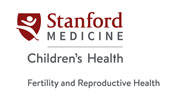Contact us
If you would like to learn more or if you are ready to make an appointment, please call or email our team.
Ovulation induction (OI) means using fertility medications to stimulate the release of one or more eggs from the ovary. OI may be done in one of two particular situations. In some cases, OI is used to help women who have irregular cycles and do not release an egg on their own to ovulate. In these cases, the goal is to use the medications to help the woman to release a single egg. In other cases, OI is used even if a woman is ovulating regularly on her own. In these cases, the goal is to use the medications at a dose which will allow the release of several eggs. The rationale for this is that if a couple is not getting pregnant as the woman is releasing one egg per month, the odds of getting pregnant will increase if several eggs release. Using the fertility medications to allow the release of several eggs is sometimes called superovulation or controlled ovarian stimulation.
OI is often used in conjunction with another treatment called Intrauterine Insemination (IUI).
Success rates with reproductive technologies (ART) are improved if multiple mature oocytes are available for retrieval. In order to mature a group of eggs, medications are administered by subcutaneous injection on a daily basis. The medications are in a class called gonadotropins. Some of the commercial names are Follistim, Gonal-F, Menopur and Repronex.
Your baseline ultrasound will be performed before starting the gonadotropin. Occasionally you may have an ovarian cyst at this time. If you have a cyst, it often disappears with continued Lupron treatment, or less commonly your MD might recommend aspiration of the cyst. If the baseline ultrasound is normal, you will begin gonadotropin injections. This medication will promote a group of several follicles (the sacs of fluid which contain the microscopic eggs) to develop together. Ideally about 10-12 follicles develop, but the response is quite variable and you may produce only 2-3 follicles, or as many as 20-30. The dose of medication you will receive is based on a prediction of how your ovaries will respond based on your age, your baseline follicle-stimulating hormone (FSH) and estradiol levels, and any previous ovulation induction experience.
When you begin the gonadotropin medication, it is important to not pursue intense physical exercise (kick boxing, jumping, etc.) because such activity could cause discomfort and twisting of the ovaries. The gonadotropin injections have some risks and side effects which are discussed in detail in the medication information and in consent forms that you will be given. Most women taking gonadotropin injections for in vitro fertilization (IVF) will feel a sense of fullness in their ovaries. Risks include ovarian hyperstimulation syndrome (OHSS) and multiple birth (particularly if multiple embryos are transferred). There has been some concern regarding the possibility of increased risk of ovarian cancer with the use of fertility medications. However, more recent studies have overall been reassuring.
When ultrasound examination suggest that the eggs are mature (usually when the lead follicle size is about 18 mm in diameter), you will be asked to take an injection of human chorionic gonadotropin (hCG). The timing of the hCG is critical, so you need to take it precisely at the time given to you on the schedule. Once you take hCG, your gonadotropin and GnRH agonist or GnRH antagonist will stop.

Connect with us:
Download our App: